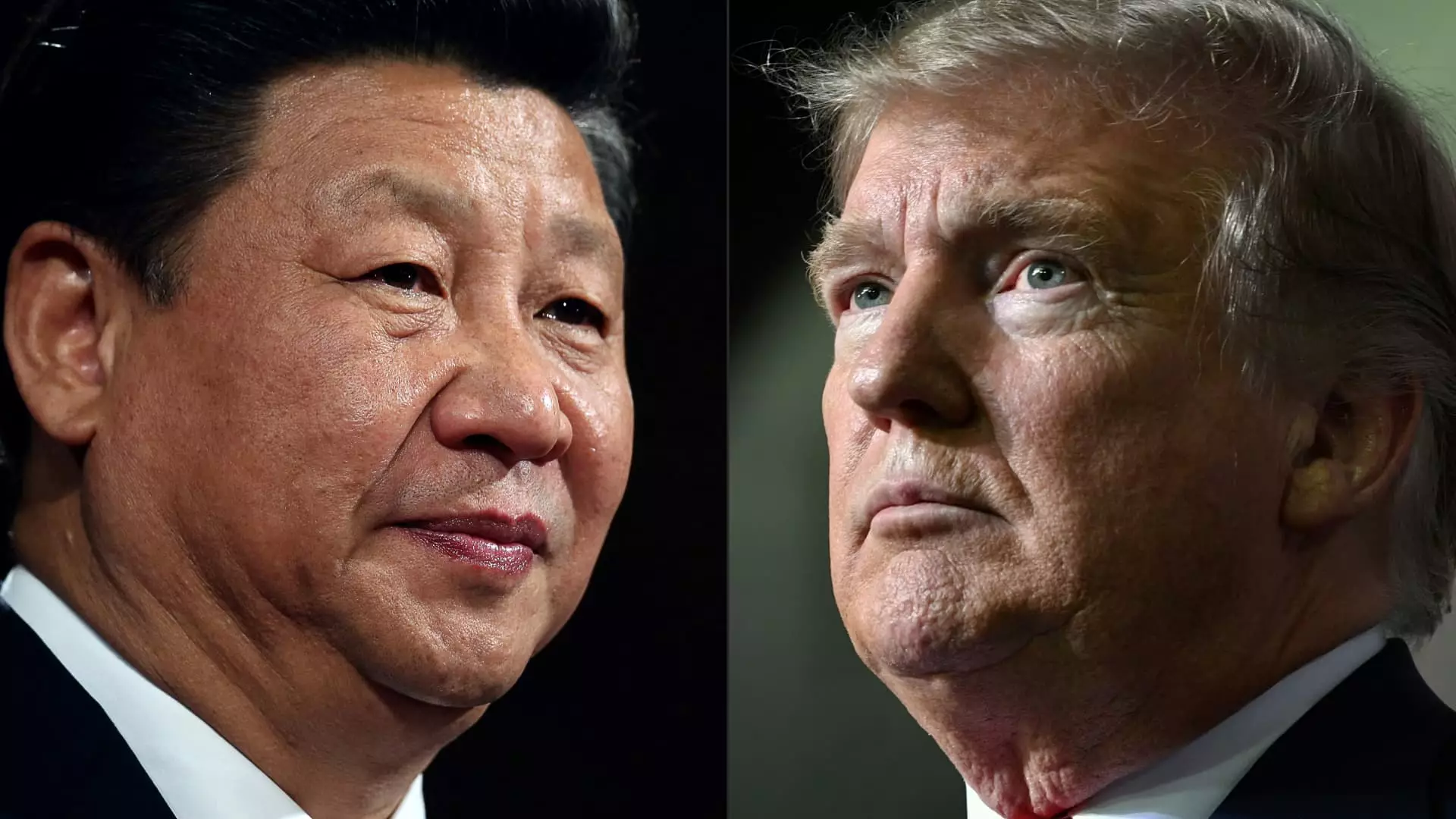In a recent statement made during a flight aboard Air Force One, U.S. President Donald Trump voiced optimism regarding a prospective visit from Chinese President Xi Jinping to the United States. While he refrained from setting a specific timeline, Trump’s comments underscore the ongoing significance of high-level dialogues between Washington and Beijing. However, a critical examination reveals that such visits often serve more as symbolic gestures rather than substantive breakthroughs in addressing the myriad challenges that punctuate U.S.-China relations.
The specter of trade negotiations looms large in the backdrop of this anticipated diplomatic meeting. Trump asserted that a new trade deal between the two superpowers is “possible,” an assertion that raises questions about the feasibility and sincerity of these negotiations. Historical context suggests that previous trade dialogues have frequently been marred by mistrust and a lack of follow-through. The optimism expressed by Trump may therefore be seen as a strategic maneuver aimed at ameliorating domestic political pressures rather than a genuine commitment to addressing the complex web of trade-related issues.
The last encounter between Xi and a U.S. president was in November 2023, when Xi met with then-President Joe Biden. That summit yielded notable agreements, including the resumption of military communications and a joint effort to tackle fentanyl production. Nevertheless, previous engagements have highlighted a pattern where discussions often lead to superficial agreements that fail to translate into lasting solutions. The historical context of U.S.-China relations reveals a series of highs and lows, often dictated by external pressures like trade tariffs, cybersecurity concerns, and contentious issues surrounding Taiwan and Hong Kong.
Moreover, Trump’s remarks about engaging in discussions regarding TikTok, a social media platform owned by Chinese parent company ByteDance, inject another layer of complexity into these relations. The attempt to broker a sale or regulatory arrangement concerning TikTok reflects deeper anxieties over cybersecurity and national security, which dominate the discourse surrounding U.S.-China relations. The interaction speaks to the growing apprehension regarding China’s technological advancements and the implications for American competitiveness.
Additionally, tensions extend beyond trade and technology. Trump’s assertion of a potential deal with Russia over the ongoing war in Ukraine highlights the interconnectedness of international relations in this geopolitical landscape. His remarks suggest a belief that negotiations can resolve multifaceted conflicts, but this oversimplifies the challenges involved. The idea that Russia holds “the cards” due to territorial gains raises further questions about the dynamics of force, power, and deterrence in international relations.
The ambivalence of China’s official response to Trump’s remarks merely highlights the intricacies involved. Chinese Foreign Ministry’s reframing of Trump’s comments to reference previously scheduled communications suggests a deliberate strategy to maintain a facade of engagement while deflecting direct acknowledgment of the substance of Trump’s claims.
As the anticipation of President Xi’s visit looms, the outlook for U.S.-China relations remains uncertain. While high-level meetings can foster dialogue, they do not necessarily guarantee resolution of entrenched issues. The interplay of economic, technological, and geopolitical factors positions both nations at a crossroads where optimism and skepticism coexist. In this era of global interdependence, fostering meaningful cooperation will require more than just optimistic rhetoric; it will necessitate a commitment to transparency, mutual respect, and substantive policy changes that prioritize addressing the father complexities inherent in this bilateral relationship.


Leave a Reply